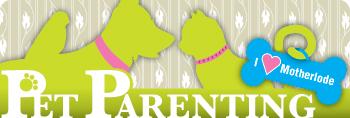
Dear Denise,
Our dog is taking his “protect the house” duties a tad too seriously. He barks LOUDLY anytime there is a knock on the door or a doorbell. It’s a  problem because we also have a newborn in the house who wakes up from a much-needed nap anytime the dog starts barking. We have a busy household with lots of kids, friends and family members coming and going throughout the day. How can I get the dog to chill out about the front door activity?
problem because we also have a newborn in the house who wakes up from a much-needed nap anytime the dog starts barking. We have a busy household with lots of kids, friends and family members coming and going throughout the day. How can I get the dog to chill out about the front door activity?
Dear Mama,
The best way to get your dog to chill out at the door is to teach him a routine behavior that he knows to perform when someone knocks. It will make things more predictable and less exciting. It may not stop the barking altogether, but it should, with time, de-escalate the behavior. I do this by teaching what I call ‘park-it.’
 Park-it simply means “go to your place,” and in this case that ‘place’ is near the door in a spot where the dog can see who is there but not be in the way if you open the door to get a package, let someone in, etc.
Park-it simply means “go to your place,” and in this case that ‘place’ is near the door in a spot where the dog can see who is there but not be in the way if you open the door to get a package, let someone in, etc.
The behavior is taught in a series of steps beginning with a sit-stay in the park-it spot when no one is at the door. Then, open the door. Look. Nobody there. Not interesting at all. Next, is the “ding-dong ditch”. It sounds like someone is there, but there isn’t. Really, it’s not exciting. See? Then, you add a person who doesn’t come in the house, then someone who does.
It’s important to perfect each step before adding the next. So you’ll need to stage things in order to control the variables, and you’ll likely need a partner to help you. This will not be learned in one day or even a week, but you can get there. I have many clients with dogs who now automatically go to their spot when someone is at the door.
Teaching this trick isn’t hard, but if you’ve never broken a behavior down into parts — and that’s essential here — you may need some professional dog training help to get moving in the right direction.
Happy training!
~Denise
 Denise Holmes is a pet behavior counselor with over 25 years of experience. She focuses on family pet training and animal-assisted therapy. She has consulted with Arkansas Children’s Hospital, helped set up a variety of local programs and produced a CD to help expecting parents introduce the family pet to a newborn, www.LoveTrustTeach.com.
Denise Holmes is a pet behavior counselor with over 25 years of experience. She focuses on family pet training and animal-assisted therapy. She has consulted with Arkansas Children’s Hospital, helped set up a variety of local programs and produced a CD to help expecting parents introduce the family pet to a newborn, www.LoveTrustTeach.com.
